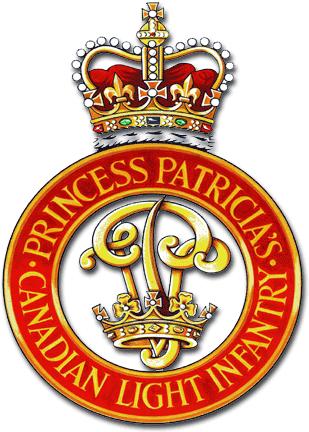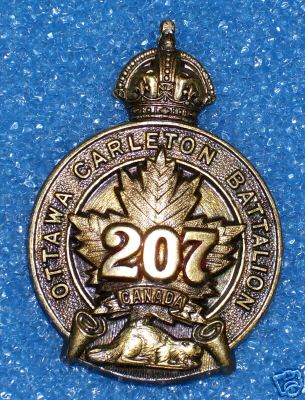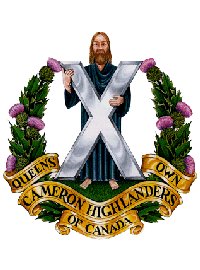
Sir Samuel Hughes, was the Canadian Minister of Militia and Defence during World War I. He was notable for being the last Liberal-Conservative cabinet minister, until he was dismissed from his cabinet post.

Princess Patricia's Canadian Light Infantry is one of the three Regular Force infantry regiments of the Canadian Army of the Canadian Armed Forces. Formed in 1914, it is named for Princess Patricia of Connaught, daughter of the then-Governor General of Canada. The regiment is composed of three battalions, for a total of 2,000 soldiers. The PPCLI is the main lodger unit of Canadian Forces Base (CFB) Edmonton in Alberta and CFB Shilo in Manitoba, and attached to 3rd Canadian Division; as such, it serves as the "local" regular infantry regiment for much of Western Canada. The Loyal Edmonton Regiment (LER), a Reserve Force battalion, is affiliated with the PPCLI but is not formally part of it. As part of this affiliation, the LER carries the designation '4th Battalion, Princess Patricia's Canadian Light Infantry'.

A drill instructor is a non-commissioned officer in the armed forces, fire department, or police forces with specific duties that vary by country. Foot drill, military step, and marching are typically taught by drill instructors.

The 3rd Canadian Division is a formation of the Canadian Army responsible for the command and mobilization of all army units in the provinces of Manitoba, Saskatchewan, Alberta and British Columbia, as well as all units extending westwards from the city of Thunder Bay.
The School of Infantry (SOI) is the second stage of initial military training for enlisted United States Marines after recruit training. The ITB now called IMC went from a 59 day course to 14 week course. Since the initial training pipeline is divided between coasts, Marines from areas east of the Mississippi River usually graduate from MCRD Parris Island and move on to SOI at SOI East, while those from the western half of the nation attend MCRD San Diego and move on to SOI West at the Camp San Onofre area of Camp Pendleton in California. Female Marines are trained at both SOI East and SOI West. The School of Infantry's training mission ensures "Every Marine is, first and foremost, a Rifleman". At SOI, Marines with the Military Occupational Specialty of infantry are trained at the Infantry Training Battalion (ITB), while all non-infantry Marines are trained in basic infantry and combat skills at the Marine Combat Training Battalion. SOI marks a transition in the professional training of entry-level students from basically trained Marines to combat-ready Marines.

The Lorne Scots is a Primary Reserve infantry regiment of the Canadian Army. It is part of the 4th Canadian Division's 32 Canadian Brigade Group.

The 207th (Carleton) Battalion, CEF was a battalion of the First World War Canadian Expeditionary Force.
The 118th Battalion, CEF was a unit in the Canadian Expeditionary Force during the First World War. In the early months of the war, Canadians rushed to enlist for various reasons - patriotism, adventure, and to oppose German hostility. Battalions were quickly filled and local communities were proud of their enlisted men. But as the war progressed Canadian recruitment numbers declined. By 1916, all Canadian battalions, not just the local 118th and 111th, were faced with enlistment challenges. Overseas casualties increased and Canadians began to realize the war would not end soon. As the war progressed and Waterloo County came under more scrutiny, Waterloo North Member of Parliament William Weichel proposed to Sir Sam Hughes, the Canadian Minister of Militia and Defence, that Waterloo County could raise two overseas battalions. Colonel A.J. Oliver, commander of the 34th Battalion in nearby Guelph, was one of the few who opposed this idea, realizing that it would be a very difficult undertaking. Hughes agreed and in December 1915 the creation of two infantry battalions was authorized - one based in Berlin and one in Galt.
The 143rd Battalion, CEF was a unit in the Canadian Expeditionary Force during the First World War. Based in Victoria, British Columbia, the unit began recruiting in 1916 throughout Western Canada. Bantam units were organized to recruit men who were shorter than the standard 5-foot-4-inch (163 cm) height required for joining the army. By the time they were fully formed, however, only about half of the men were under that standard height as they could not find enough short men to enlist.

The Queen's Own Cameron Highlanders of Canada is a Primary Reserve infantry regiment of the Canadian Army. It is part of the 3rd Canadian Division's 38 Canadian Brigade Group and is headquartered at the Minto Armoury in Winnipeg, Manitoba. It is the oldest highland regiment in Western Canada.

Battalion Park is a geoglyph site in southwest Calgary, Alberta, Canada. It is located on Signal Hill, overlooking the Tsuu T'ina Nation, as well as lands formerly known as Camp Sarcee and later Sarcee Training Area, a military reserve used by the Canadian Forces from before the First World War up until the 1990s. The park extends over an area of 93 hectares, north of the Elbow River. Its heritage value is associated with its dedication to the heroic efforts of Albertan soldiers during the First World War.

A pioneer is a soldier employed to perform engineering and construction tasks. The term is in principle similar to sapper or combat engineer.

The 41st Battalion, Royal New South Wales Regiment,, is an infantry battalion of the Australian Army. An Army Reserve unit, it is one of four battalions of the Royal New South Wales Regiment and is attached to the 5th Brigade, 2nd Division. It is based in northern New South Wales, with its headquarters in Lismore and depots in a number of locations including Taree, Tweed Heads, FGC (Grafton), Kempsey, Port Macquarie and Coffs Harbour. In its present form the battalion was raised in 1965, however, it can trace its lineage back to a couple of Scottish Rifles units formed in the 1800s in Byron Bay and Maclean. It also perpetuates the battle honours and traditions of the 41st Bn AIF, that served on the Western Front during World War I.
The 6th Canadian Infantry Brigade was an infantry brigade of the Canadian Army that fought during World War I and World War II. Raised in 1915, it formed part of the 2nd Canadian Division and fought on the Western Front during World War I before being disbanded. Later, it was re-raised in September 1939 and subsequently took part in Allied operations in north-west Europe in 1944 and 1945.
Area Support Unit Chilliwack is a Canadian Forces facility located in Chilliwack, British Columbia.

The 5th Battalion, CEF, known as "Tuxford's Dandys," was an infantry battalion of the Canadian Expeditionary Force during the Great War.

The 113th Battalion, CEF, was an infantry battalion of the Great War Canadian Expeditionary Force. The 113th Battalion was authorized on 22 December 1915 as part of a recruiting drive in which men from the same region could enlist and serve together.

John Walker was a Canadian horticulturist and plant breeder who developed numerous varieties of trees and shrubs. His selections have been used in shelterbelts and landscaping applications across Canada and in northern countries around the world. Some of his selections include:
XI Canadian Field Ambulance (Western Universities) was a field ambulance unit in the Canadian Expeditionary Force during the First World War. Recruitment for the unit began during the winter of 1915/16 in universities throughout western Canada. After arriving in France in August 1916, XI Canadian Field Ambulance treated casualties at a number of major engagements, including the Battle of Vimy Ridge and the Hundred Days Offensive. It arrived back in Canada in 1919, and demobilized in May of that year.
















